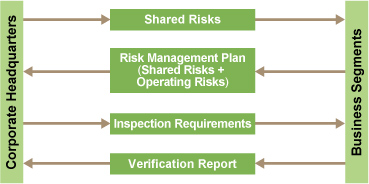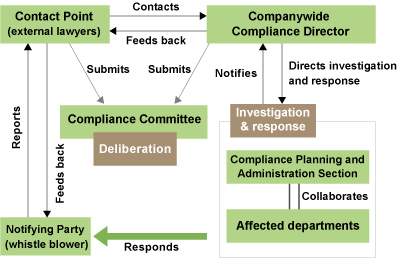Home > About Us > Corporate Social Responsibility > Sustainability Report > Sustainability Report 2009 > Strengthening Compliance
 Strengthening Compliance
Strengthening Compliance
|
Risk Management Activity Cycle 

|
|||||||||||||||||||||||||||||||||||||
Home > About Us > Corporate Social Responsibility > Sustainability Report > Sustainability Report 2009 > Strengthening Compliance
|
Risk Management Activity Cycle 

|
|||||||||||||||||||||||||||||||||||||